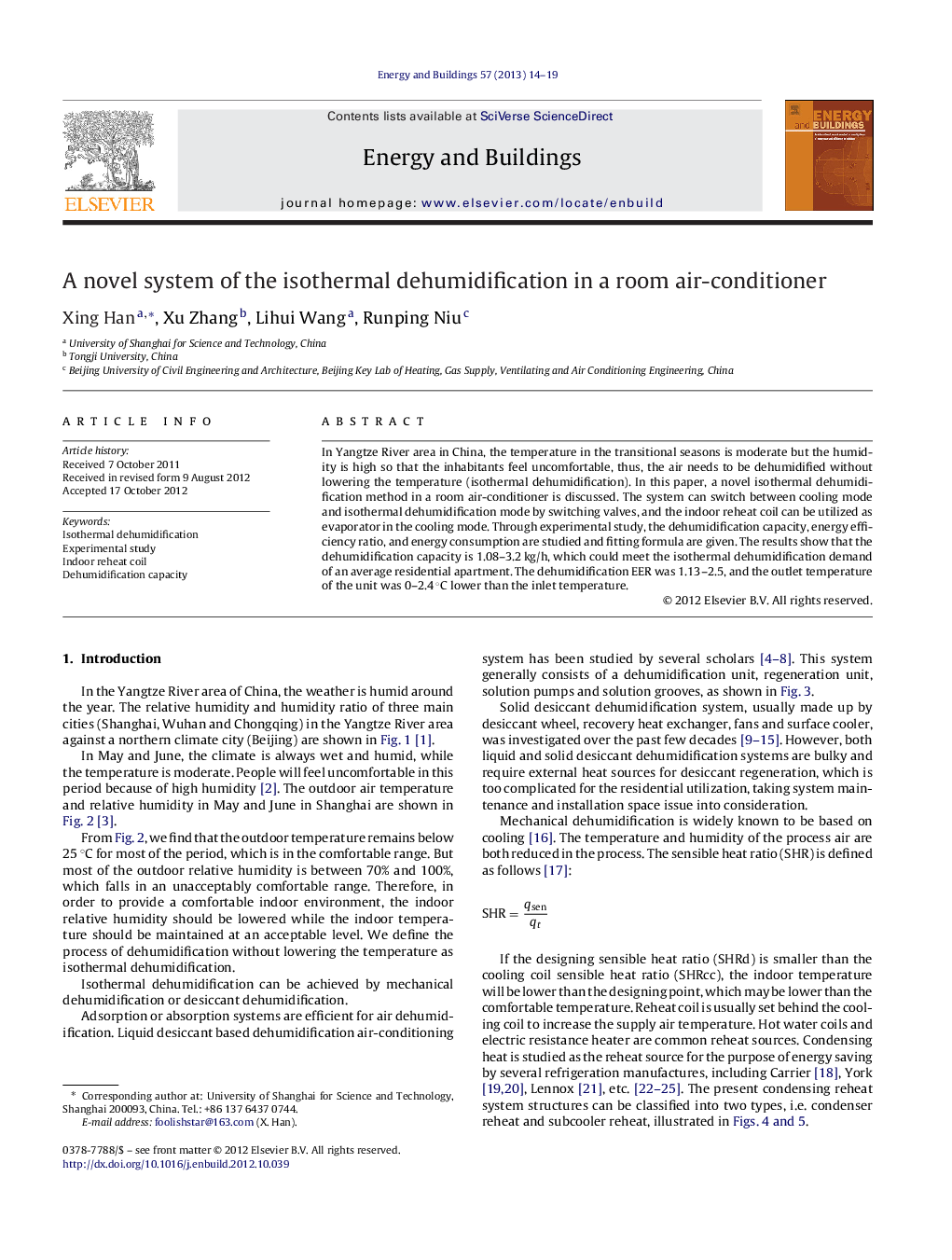| Article ID | Journal | Published Year | Pages | File Type |
|---|---|---|---|---|
| 263557 | Energy and Buildings | 2013 | 6 Pages |
In Yangtze River area in China, the temperature in the transitional seasons is moderate but the humidity is high so that the inhabitants feel uncomfortable, thus, the air needs to be dehumidified without lowering the temperature (isothermal dehumidification). In this paper, a novel isothermal dehumidification method in a room air-conditioner is discussed. The system can switch between cooling mode and isothermal dehumidification mode by switching valves, and the indoor reheat coil can be utilized as evaporator in the cooling mode. Through experimental study, the dehumidification capacity, energy efficiency ratio, and energy consumption are studied and fitting formula are given. The results show that the dehumidification capacity is 1.08–3.2 kg/h, which could meet the isothermal dehumidification demand of an average residential apartment. The dehumidification EER was 1.13–2.5, and the outlet temperature of the unit was 0–2.4 °C lower than the inlet temperature.
► A novel isothermal dehumidification method in a room air-conditioner was designed. ► The indoor reheat coil could be utilized as evaporator in the cooling mode. ► Experiments were to test its effectiveness, dehumidification capacity and EER. ► The results showed that it could meet the dehumidification load and outlet air temperature requirement.
